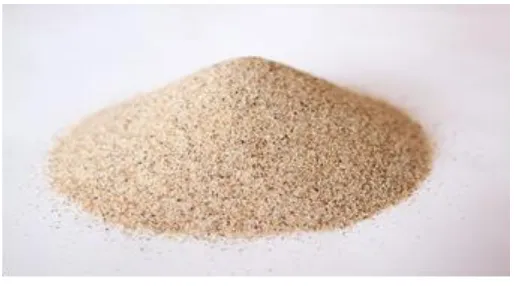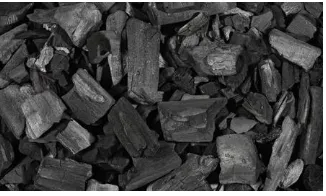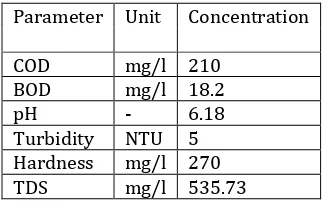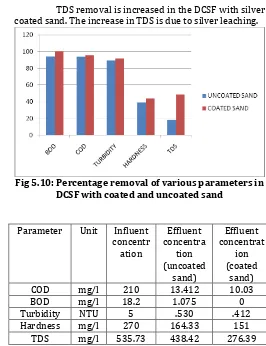© 2017, IRJET | Impact Factor value: 5.181 | ISO 9001:2008 Certified Journal | Page 652
Modified Drawer Compacted Sand Filter
Prof. Neethu John
1, Abhijith G
2, Ciji B
3,Haripriya M
4, Jivic J Panackal
5, Sijitha Sidhan
61
Assistant Professor, Civil Engineering Dept. Ahalia School of Engineering And Technology, Palakkad, Kerala, India
2,3,4,5,6
UG Student, Civil Engineering Dept. Ahalia School of Engineering And Technology, Palakkad, Kerala, India
---***---Abstract -
The Modified Drawer Compacted Sand Filter (MDCSF) is a modified design for a drawer compacted sand filter in which the sand layer, is broken down into several layers , each of which is 10 cm high and placed in a movable drawer separated by a 10 cm space. A lab-scale DCSF was designed and operated for 60 days fed by synthetic grey water. The response of drawer compacted sand filters and modified drawer compacted sand filter in terms of COD, BOD5, Hardness, turbidity and TDS reductions were evaluated. Each loading regime was applied for 30 days. Results showed that DCSF was able to remove > 91% of organic matter and Total Suspended Solids for all doses. Significant reduction in BOD5 (100%) and COD (95%) was noticed after water drained through the modified drawer compacted sand filter. This paper concludes that MDCSF would be appropriate for use in dense urban areas as its footprint is small and is appropriate for a wide range of users because of its convenience and low maintenance requirements.Key Words: Drawer compacted sand filter, grey water filter,
synthetic grey water , Modified drawer compacted sand filter
1.INTRODUCTION
Water covers 70 percent of the globe’s surface, but most is saltwater. Freshwater covers only 3 percent of the earth’s surface and much of it lies frozen in the Antarctic and Greenland polar ice. Freshwater that is available for human consumption comes from rivers, lakes and underground sources and aquifers. Together these sources account for just one percent of all water on earth. The world’s fresh water sources are threatened by climate change. Scientists around the world agree that recent climate changes occurring globally are the result of human activities. Rising global temperatures lead to heightened risk of more extreme and frequent floods and drought.
Water scarcity currently affects many region in the world. In water rich countries, urbanization and industrialization have frequently led to contaminated and deteriorated surface water and ground water such that these countries are unable to meet the ever increase water demand. The UN’s climate change panel stated that the world’s current population of about 6.6 billion is forecast to rise by 2.5 billion by 2050. As human population increases, the need for water also increases in domestic, agricultural, industrial and urban sectors. Consequently, water or ‘blue gold’ is widely predicted to be a critical resource. In 2009, the symposium
on water security organized by the World Water Organization warned that two-third of the world’s population will face water shortage by 2050.
2.
MATERIALS
2.1Sand
[image:1.595.308.565.347.490.2]In DCSF, sand was used as a major filtering medium. Sand could remove large extend of impurities from water. Each draws of DCSF was filled with different grades of sand. The purity of water increases with fineness of sand.
Fig 2.1: sand
2.2 Silver Coated Sand
Silver coated sand was obtained by treating sand with silver nitrate. It can remove micro-organisms from the impure water. The silver content present in purified water will resist the growth of unhealthy organisms. Hence it can be stored till further use.
Preparation:
1. 500gm of graded, washed and dried sand was mixed with 1gm silver nitrate and dissolved in 1lit of distilled water
2. Above ingredients are mixed thoroughly and allowed a maturing time of 1hr.
© 2017, IRJET | Impact Factor value: 5.181 | ISO 9001:2008 Certified Journal | Page 653 4. The sand was treated with 10ml of 1% NH4OH
solution and 15ml of reducing agent (9% of sugar solution) mixed thoroughly as before and left for 1hr.
[image:2.595.353.516.165.263.2]5. The treated sand after solar drying was washed with distilled water to pH 7 and finally dried at 100-110 degree Celsius
Fig 2.2: silver coated sand
2.3 Coconut Shell Activated Charcoal
Coconut shell was treated with NaCl to obtain coconut shell charcoal. It has high adsorption capacity. Hence it can purify water.
Preparation:
1. The activated carbon was produced by chemical activation of charcoal
2. NaCl was carbonized at a temperature of about 100°C
3. Then soak charcoal in NaCl.
4. After the production of charcoal, the materials were broken into smaller pieces (1-5mm in size). 5. Then the pieces were soaked in a 50% solution of
NaCl for 24 hours.
6. After that it is allowed to dry in the sun or placed in an oven at 100°C
Fig 2.3: coconut shell activated charcoal
2.4 Charcoal
Charcoal is a porous material which can purify water. It is obtained by burning of wood. It is available in different grades in the market.
Fig 2.4: charcoal
3 METHODS
3.1 Synthetic waste water preparation
Synthetic grey water was prepared so that the DCSF could be tested and optimized using grey water of consistent quality. The synthetic grey water can be prepared by mixing 0.16g of dish washing solution, 0.16g hair shampoo (clinic plus brand), 0.16g washing powder, 0.1g of coconut oil, and 1 L of tap water. The synthetic grey water was prepared on daily basis and stored at room temperature.
3.2 Experimental setup
3.2.1 Drawer Compacted sand filter (DCSF) fabrication
[image:2.595.47.278.166.313.2]A DCSF unit under laboratory conditions was constructed. A fabricated steel framework and six plastic drawers with dimensions of 50cm x 30cm x 10cm were obtained and placed on the frame. Each drawer except the lowest drawer (number 6) was perforated with holes. A distribution manifold was placed over the top drawer and it is connected to the storage tank which contains synthetic grey water, placed next to DCSF.
[image:2.595.384.492.572.769.2]© 2017, IRJET | Impact Factor value: 5.181 | ISO 9001:2008 Certified Journal | Page 654 3.2.2 Design parameters of the laboratory DCSF
It is a Point of Use treatment unit and generally we use drawers of 1 m2 area. For lab study here used the drawers of dimension 50 cm x 30cm x 10cm based on the availability.
Filter medium
Drawer 1 Gravels; effective size
4.75 mm
Drawer 2 Silica; effective size 1.18 mm Drawer 3 Silica; effective size
600micron Drawer 4 Silica; effective size
75micron Drawer 5 Silica; effective size
1.18mm and 600micron
Drawer 6 Granular activated
carbon Depth of media 10cm (for each drawer)
Perforation – for each drawer – except the lowest one
[image:3.595.353.514.133.234.2]Orifice size=4mm Orifice spacing=10cm Number of orifices =15
Table 3.1: Design parameters
3.2.3 Operating conditions and procedures
Drawer compacted sand filter with uncoated sand were fed with synthetic grey water. They were operated under room temperature and after each treatment the effluent was tested for pH, COD, BOD, Hardness, turbidity and TDS. Same procedure is repeated by replacing 4th and 5th drawers by coconut shell activated carbon and silver coated sand.
3.2.4 Sample Collection and Storage
The synthetic waste water was prepared daily and was fed into the DCSF with and without silver coated sand. It was subjected to various operating conditions and after each treatment the effluent was collected in bottles and was tested for various parameters. The water was collected for three times at an interval of 5 days.
4. CONCLUSIONS
4.1 Results and Discussion
The performance of Drawer Compacted Sand Filter (DCSF) in the grey water treatment was studied and
compared with DCSF with silver coated sand and the results of the study are reported as follows.
Parameter Unit Concentration
COD mg/l 210
BOD mg/l 18.2
pH - 6.18
Turbidity NTU 5 Hardness mg/l 270
[image:3.595.33.281.174.444.2]TDS mg/l 535.73
Table 4.1: Characteristics of synthetic grey water
Table 4.2: Experimental data of DCSF with uncoated sand
High removal efficiency can be seen in DCSF filter. Because,Drawer Compacted Sand Filter through dividing the sand depth into several layers and allowing air space between layers would ease the diffusion of oxygen between different layers so that the filter will function with fully aerobic conditions, thus enhancing the aerobic biological treatment of grey water and increase the treatment efficiency.
For the survival of the microorganisms within the biological zone, there needs to be a supply of oxygen. Oxygen is used in the metabolism of biodegradable components and the inactivation and consumption of pathogens. If it falls to zero during filtration anaerobic decomposition occurs, with consequent production of hydrogen sulphide, ammonia, and other taste- and odour-producing substances together with
Parameter Influent
concentration concentration Effluent % Removal
COD
(mg/l) 210
13.713 93.47
13.42 93.61
13.104 93.76
BOD5
(mg/l) 18.2
1.08 94.065
1.076 94.087
1.07 94.120
Turbidity
(NTU) 5
0.869 82.62
0.411 91.78
0.312 93.76
Hardness
(mg/l) 270
164 39.25
169 37.40
160 40.74
TDS
(mg/l) 535.73
443.76 17.16
436.25 18.56
435.25 18.755
pH 6.18 6.61 6.68 NA NA
[image:3.595.307.567.275.544.2]© 2017, IRJET | Impact Factor value: 5.181 | ISO 9001:2008 Certified Journal | Page 655 dissolved iron and manganese, which make the treated
[image:4.595.294.560.96.442.2]water unsuitable for washing clothes.
Table 3.2: Experimental data of the DCSF with silver coated sand
From the above analysis, it was found that MDCSF gives highest removal percentage in maximum number of parameters. The percentage removal of COD, BOD5, turbidity, hardness and TDS are 95.18, 100, 91.76, 44.07 and 78.40 respectively.
COD removal is slightly increased in the case of silver coated sand. COD removal with uncoated sand is 93.61% and with the coated sand is 95.18%. It is due to the silver leaching in the effluent water.
BOD is one among the most important parameters for the design and operation of sewage treatment plants. BOD removal is increased in DCSF with silver coated sand. BOD removal with uncoated sand is 94.09% whereas with coated sand it is 100%. This is due to the activity of silver along with the microorganisms present in the sand. This result shows generally settable BOD may be removed by physical mechanisms of sedimentation and filtration. Turbidity in water caused by suspended solid such as clay, finely divided organic and inorganic matter, plankton and other microscopic organism. Total suspended solids include all particles suspended in water that may pass through a filter. Higher turbidity removal efficiency is obtained for silver coated sand as some of the suspended solids are also removed as BOD. Turbidity removal with uncoated sand is 89.34% whereas with coated sand it is 91.76%
TDS removal is increased in the DCSF with silver coated sand. The increase in TDS is due to silver leaching.
Fig 5.10: Percentage removal of various parameters in DCSF with coated and uncoated sand
Parameter Unit Influent concentr ation
Effluent concentra
tion (uncoated
sand)
Effluent concentrat
ion (coated
sand)
COD mg/l 210 13.412 10.03
BOD mg/l 18.2 1.075 0
Turbidity NTU 5 .530 .412
Hardness mg/l 270 164.33 151
TDS mg/l 535.73 438.42 276.39
Table 5.6: Comparison of effluent concentrations of different parameters in DCSF with uncoated sand and coated sand
The results revealed that MDCSF has achieved high performance in the removal of BOD5, COD. The efficiency of BOD5 removal ranged 100% and for COD 95-96%. The efficiency of TDSremoval ranged 77-79% and for total hardness 42-45%. Finally we have concluded that, Modified drawer compacted sand filter is more efficient in removal of BOD by 6% and COD removal by 0.23%.In the case of hardness there is an improvement of 12% and an increase of 20% removal for total dissolved solids.
ACKNOWLEDGEMENT
At the foremost we would like to the almighty his blessings on us for accomplish this project work up to this. We would like to express our sincere thanks to our Principal Dr. Vishnu Ram for providing the facilities within the college our sincere thanks to our HOD Dr. Jino John for the support and suggestions to our project work we express our deepest, heartiest and sincere thanks to our coordinator Asst.Prof. Alwyn Varghese who has been spark for enlightening our knowledge, continuous support and suggestions we express our deep sense of gratitude and sincere thanks to our project Parameter Influent
concentration concentration Effluent % Removal
COD
(mg/l) 210
10.2 95.14
10.1 95.19
9.8 95.23
BOD5
(mg/l) 18.2
0 100
0 100
0 100
Turbidity
(NTU) 5
0.513 89.74
0.411 91.78
0.312 93.76
Hardness
(mg/l) 270
155 42.59
150 44.44
148 45.18
TDS
(mg/l) 535.73
282.32 47.30
276.54 48.38
270.32 49.54
pH 6.18 6.61 6.68 NA NA
[image:4.595.29.286.130.406.2]© 2017, IRJET | Impact Factor value: 5.181 | ISO 9001:2008 Certified Journal | Page 656 guide Asst.Prof.Neethu John for her support, valuable
guidance and encouragement throughout the project work we convey our inmost gratitude to our staff members for their competent support in work
REFERENCES
1. Ababu T. Tirunch, Amos O. Fadiran, William N. Ndlela, Jonna Heikkila. Assessment of technical and economic feasibility of activated charcoal removal of organic matter from different streams of grey water through study of adsorption isotherms. 2016.
2. Abeer Albalawneh, Tsun-Kuo Chang. Review of the grey water and proposed grey water recycling scheme for agricultural irrigation reuses. 2015.
3. Almoayied Assayed, Jonathan Chenoweth, Steven Pedley. Assessing the efficiency of an innovative method for onsite grey water treatment: Drawer compacted sand filter –A case study in Jordan.2015. 4. Almoyied Assayed, Jonathan Chenoweth, Steven Pedley.
Drawer compacted sand filter: a new and innovative method for on-site grey water treatment. 2014. 5. Ami Cobb, Mikell Warms, Dr. Edwin P Maurer, Dr.
Steven Chiesa. Low-Tech Coconut Shell Activated Charcoal Production.2012.
6. Cecilia Rolence, Revocatus Lazaro Machunda, Karoli Nicholas Njau. Water hardness removal by coconut shell activated carbon. 2014.
7. Dr. Pankaj Singh, Saurabh Kumar Singh, Shilpi Singh, Pratibha Sharma. Domestic Wash Water Treatment Using Fly Ash Alone and in Combined Form. 2014. 8. Dr. Suhas V Patil, Suryakant C Nawle, Sunil J Kulkarni.
Industrial Applications of Fly ash: A Review.2013. 9. Farhana M, Meera V. synthesis of nanosilver coated
sand using plant extracts. 2015.
10. Fbr- Information Sheet. Greywater Recycling: planning fundamentals and operation information. 2005. 11. I. I. Nwajuaku, O. E. Ekenta, A. I. Nwajuaku. Treatment
of Grey water for Non-Potable Applications. 2015.
12. K.S. Beenakumari. Removal of iron from water using modified coconut shell charcoal as adsorbent. 2009. 13. Larous S, Meniai A. The use of sawdust as by product
adsorbent of organic pollutant from wastewater: adsorption of phenol. 2012
14. Mohammed Arifur Rahman, Shamim Ahsan, Satoshi Kaneco, Hideyuki Katsumata, Tohru Suzuki, Kiohisa Ohta. Waste water treatment with multi layer media of waste and natural indigenous materials. 2004. 15. Shamim Ahsan, Satoshi Kaneco, Kiyohisa Ohta,



